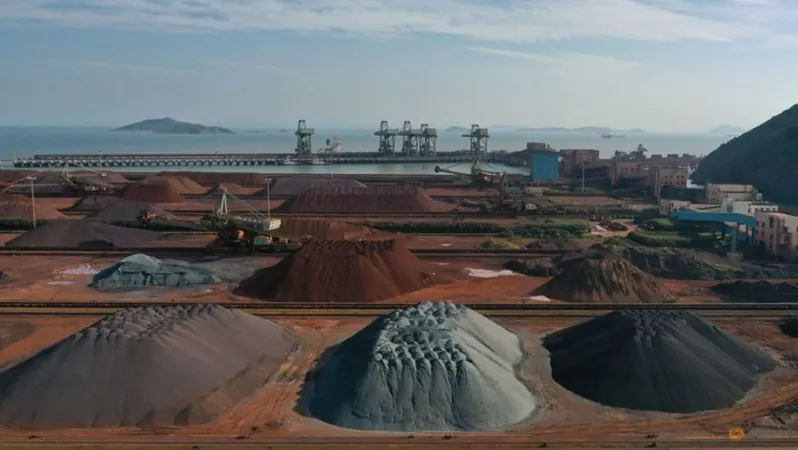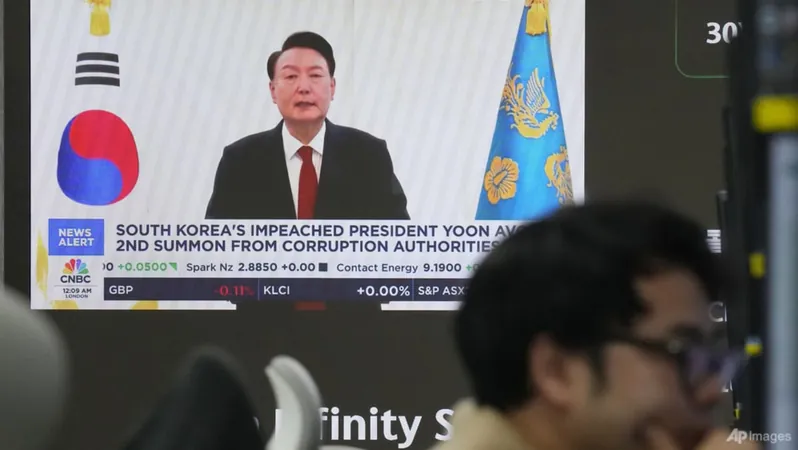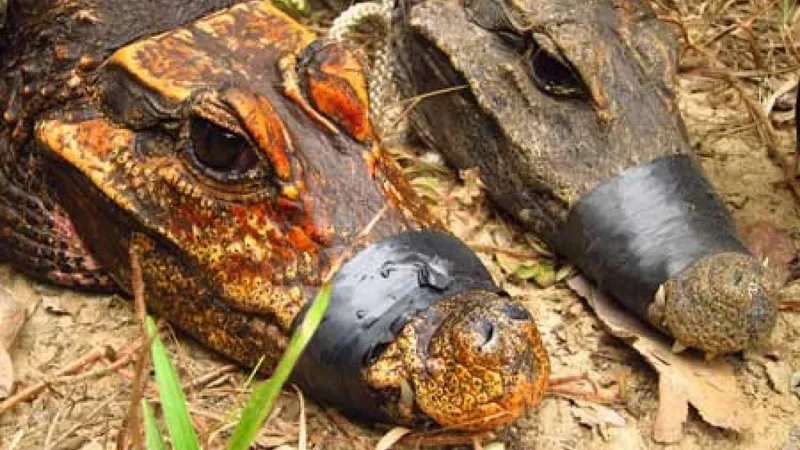
China's Iron Ore Imports Set to Surge in 2025 Despite Steel Demand Decline
2025-01-02
Author: Sarah
Introduction
China's iron ore imports are on track to reach an unprecedented high in 2025, as traders amass stockpiles of affordable ore, despite ongoing challenges in the country's property sector that are dampening steel demand, analysts and traders reveal.
Import Projections
Expectations indicate that China's imports of this vital steelmaking resource could increase by 10 to 40 million metric tons, potentially totaling up to 1.27 billion tons in 2025. This marks a significant rise from forecasted record levels in 2024, according to insights from seven analysts and two traders involved in a recent Reuters survey.
Supply Factors
This surge in imports is largely attributed to enhanced supply from key producers such as Australia and Brazil. Producers are keen to sell ore ahead of the forthcoming production from the enormous Simandou iron ore project, which is anticipated to flood the market with new supply later this year.
Price Predictions
Projections indicate a decline in iron ore prices to a range between US$75 and US$120 per ton in 2025, down from US$88 to US$144 per ton in 2024, as reported by consultancy Steelhome. 'We foresee a moderate surplus in 2025, with prices stabilizing around US$95-100,' stated Myles Allsop, head of EMEA mining at UBS. Analysts warn that this surplus may expand further in 2026/27, driving prices down even more.
Stockpile Growth
Although steel sector weakness continues to be a concern—since it accounts for the majority of iron ore consumption—Chinese port stockpiles are expected to balloon to approximately 170 million tons by 2025. Current stockpiles have already surged by 28.3% year-on-year, reaching 146.85 million tons as of December 27.
China's Iron Ore Dominance
Notably, China, which commands more than two-thirds of global seaborne iron ore cargoes, imported 1.124 billion tons of iron ore during the first 11 months of 2024, reflecting a 4.3% increase year-on-year, even as crude steel output dipped by 2.7% in the same timeframe. This trend points to trader and supplier confidence in the resilience of China's iron ore demand in the face of ongoing adversity in the property industry.
Supply Expectations from Australia and Brazil
Looking ahead, supply from top iron ore producer Australia is expected to increase by around 20 million tons in 2025, driven by enhanced production at various mining projects including Rio Tinto's Western Range and Fortescue's Iron Bridge. Similarly, Brazilian mining giant Vale aims to boost its production to between 325-335 million tons in 2025, slightly up from approximately 328 million tons in 2024.
Potential Challenges
However, some analysts caution that potential depreciation of the yuan, coupled with China’s intention to elevate the proportion of steel produced from electric arc furnaces—primarily reliant on scrap materials—could temper iron ore imports this year.
Dwindling Steel Demand
Predictably, steel demand is projected to fall by 1.5% this year, following an anticipated 4.4% plunge in 2024, as per assessments by the China Metallurgical Industry Planning and Research Institute (MPI). The positive momentum from a robust manufacturing sector and steady steel exports may not sufficiently offset the prevailing downturn in real estate.
Government Stimulus
In its efforts to invigorate the economy, Beijing has rolled out multiple stimulus initiatives and is expected to implement additional measures to mitigate the repercussions of potential tariff increases introduced by the newly elected U.S. President.
Market Outlook
Nonetheless, according to Tomas Gutierrez, head of data at Kallanish Commodities, these efforts will primarily benefit secondary steel consumers, such as the automotive and white goods sectors. 'While these developments are encouraging, they fall short of counterbalancing the economic restructuring faced by the real estate sector,' Gutierrez noted.
Conclusion
The turbulent landscape ahead raises questions about China's strategic approach in balancing iron ore imports with evolving steel production methodologies in an increasingly demanding global market.




 Brasil (PT)
Brasil (PT)
 Canada (EN)
Canada (EN)
 Chile (ES)
Chile (ES)
 España (ES)
España (ES)
 France (FR)
France (FR)
 Hong Kong (EN)
Hong Kong (EN)
 Italia (IT)
Italia (IT)
 日本 (JA)
日本 (JA)
 Magyarország (HU)
Magyarország (HU)
 Norge (NO)
Norge (NO)
 Polska (PL)
Polska (PL)
 Schweiz (DE)
Schweiz (DE)
 Singapore (EN)
Singapore (EN)
 Sverige (SV)
Sverige (SV)
 Suomi (FI)
Suomi (FI)
 Türkiye (TR)
Türkiye (TR)